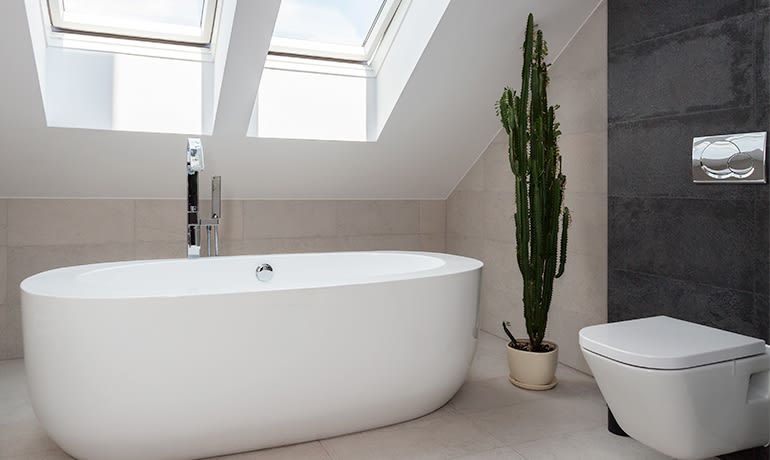
When all the right conditions are present, moisture, ample food, and a temperature between 5 and 37 degrees celsius, mould will begin growing within 24 to 48 hours.
However, this growth can often remain undetected until the spores have already affected large areas of your property and caused considerable structural damage.
That’s why the easiest way to beat these fungal culprits in the winter months is with prevention. Here’s how to limit moisture, remove tempting food sources, and keep an eye out for the first tell-tale signs of a winter mould problem.
1. Increase Air Circulation and Reduce Humidity
One cheap and simple step to reduce moisture is to use fans and open windows. By increasing the air circulation in rooms, cold air is less likely to condense in nooks and crannies.
If you don’t handle the cold all that well, opening windows might not be an option. Instead, consider purchasing a dehumidifier to reduce the overall moisture inside your home.
Look for one that offers digital readings, which can help you to keep your indoor humidity level below 40 percent.
2. Keep an Eye Out for Leaks That Can Let in Excess Moisture
Watch for leaks in common areas such as windows, exterior-to-interior doorways, and the surrounding areas by swamp coolers and skylights.
Not only should you be on high alert for leaks coming from the outdoors, but don’t forget to check your indoor plumbing as a possible culprit for excess moisture. Check for hidden leaks in areas such as under bathroom and kitchen sinks.
3. Repair Any Leaky Area Immediately
Mould and mildew can grow at a rapid pace. The longer you leave a leak unattended, the more likely you are to experience mould and the damage that comes with it.
In short, the moment you suspect or see a leak, fix it–or you might be stuck with paying for more expensive mould remediation.
4. Limit the Possible Areas Where Mould and Mildew Can Grow
Since fungi thrive on quick-to-decompose items such as books, piles of loose papers, or boxes of clothing, use strategy when storing these items.
The best areas for long-term storage are away from external walls or windows that invite condensation. Instead, pick an area that enjoys circulation to prevent the possibility of built-up moisture.
Remember to also keep a close eye on the moisture in your bathroom and clean surfaces regularly as well. After all, bathrooms can carry the most moisture in the home, which naturally results in the most mildew.
5. Take Care to Keep Entryway Flooring Dry During Wet Weather
In rooms where moisture is a problem, area rugs and other washable floor surfaces are preferred over wall-to-wall carpet, if possible.
These washable floor surfaces can be especially helpful in entryways (versus carpeting), where constantly tracking in moisture can quickly lead to mould growth.
In instances where you do have carpet up to the door, take care to vacuum the area regularly, inspecting for signs of any mould near the baseboards or where your carpet meets the wall.
6. Use Exhaust Fans in the Kitchen and Bathroom
Boiling water and taking steamy showers provide your home’s environment with plenty of moisture. Make sure not to slack when it comes to turning on exhaust fans, including the one in your oven’s hood, which can help reduce condensation formation.
It’s also helpful to leave exhaust fans on for twenty to thirty minutes after steaming up a room, along with wiping down moisture on the walls with a dry rag.
Source: highya.com








